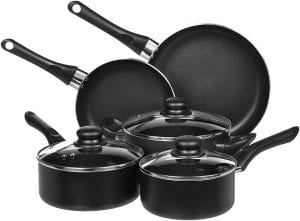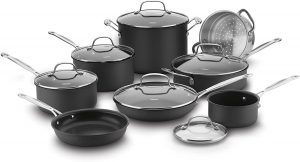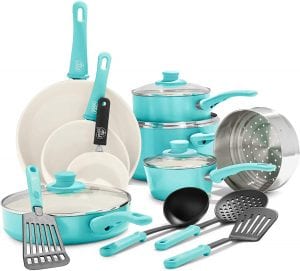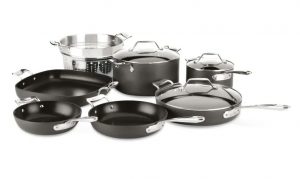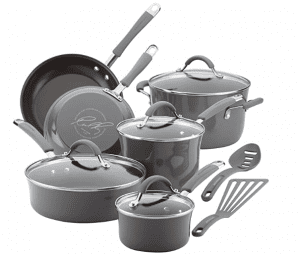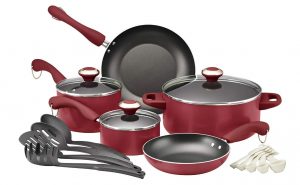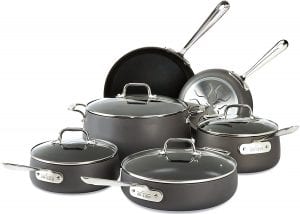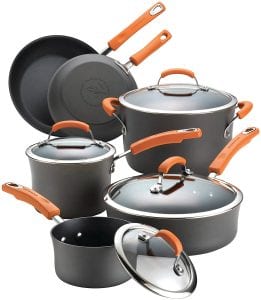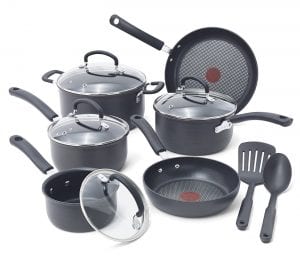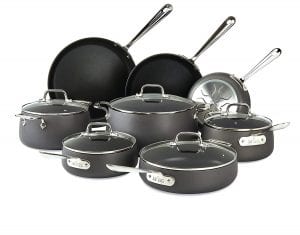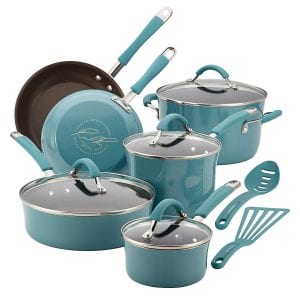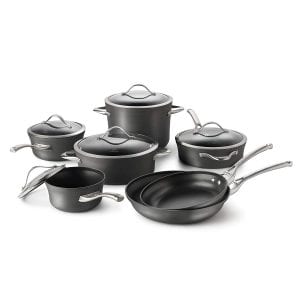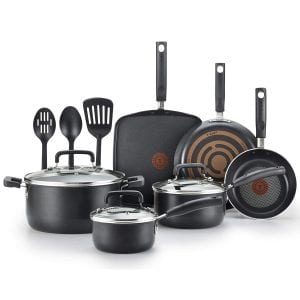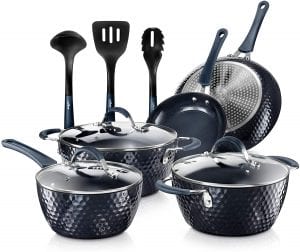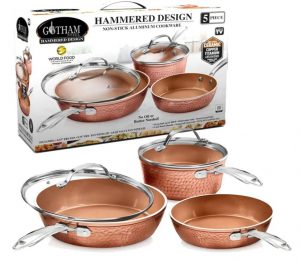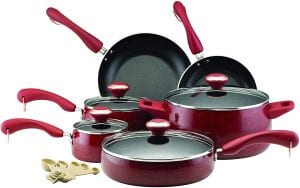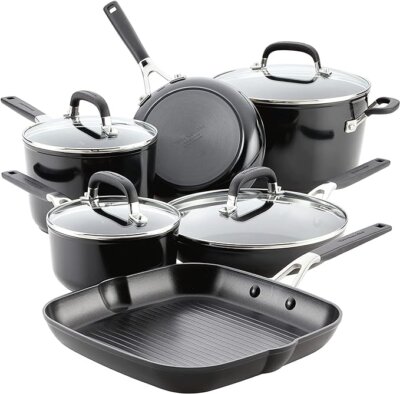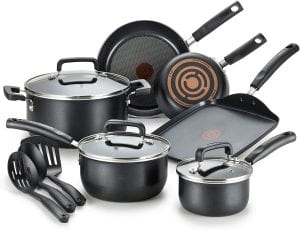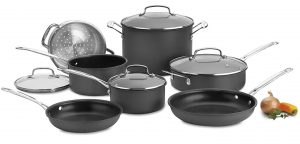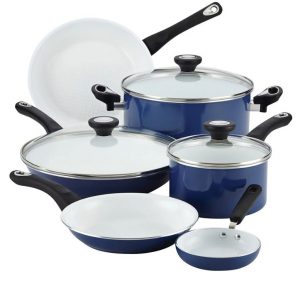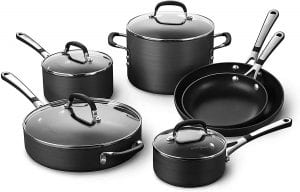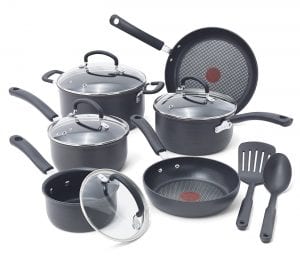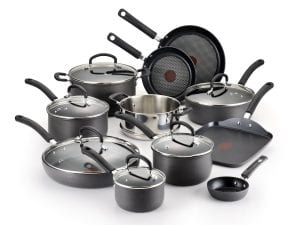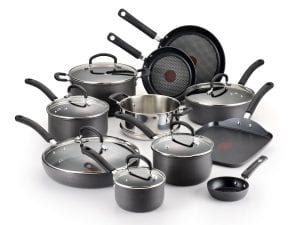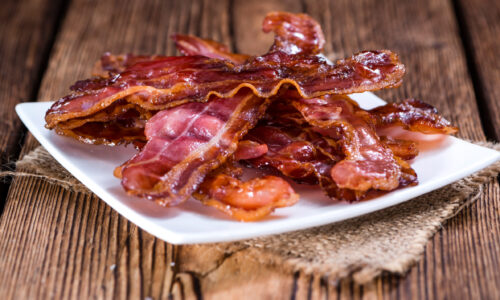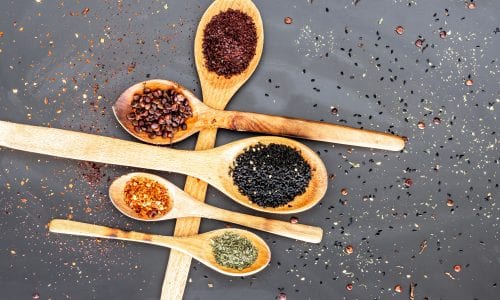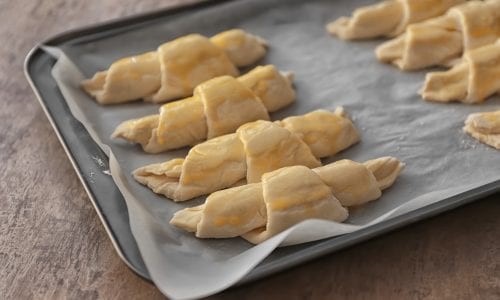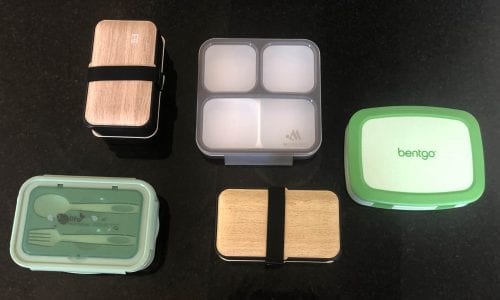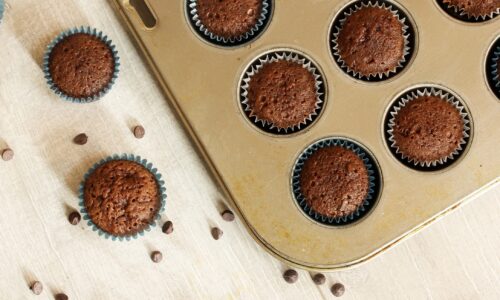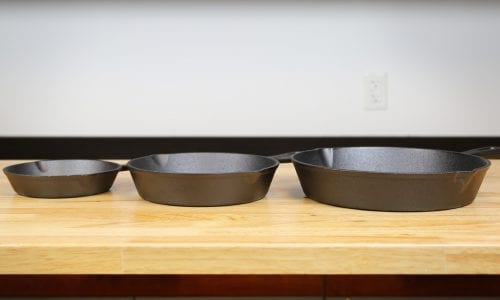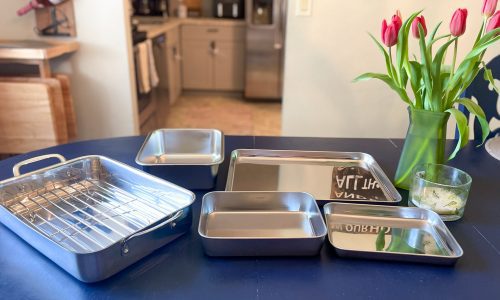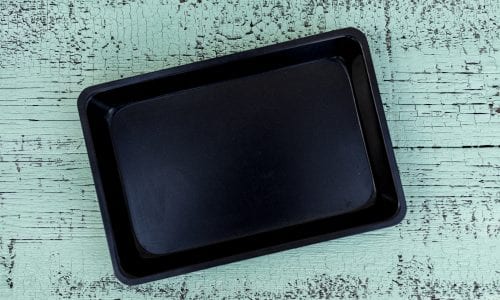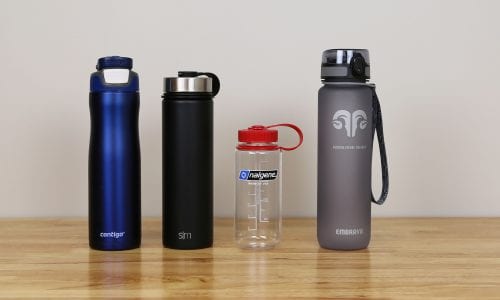The Best Nonstick Cookware Set
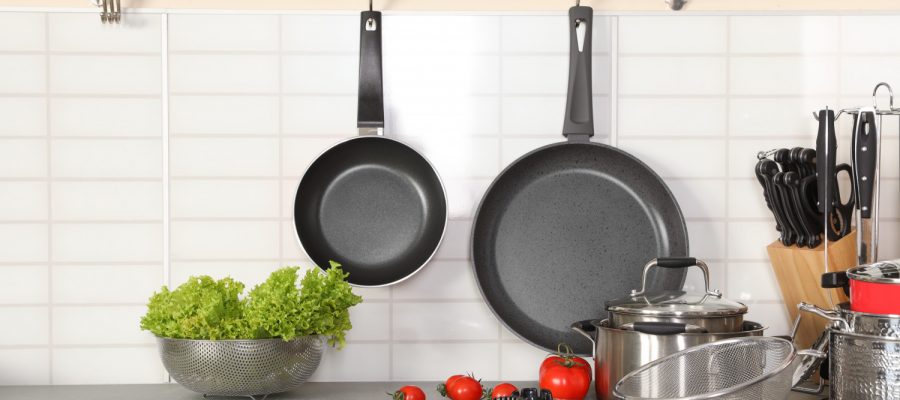
Our Review Process
Don't Waste Your Money is focused on helping you make the best purchasing decision. Our team of experts spends hundreds of hours analyzing, testing, and researching products so you don't have to. Learn more.
Our Picks For The Top Nonstick Cookware Sets
- 1. AmazonBasics Aluminum Kitchen Nonstick Cookware Set, 8-Piece
- 2. Cuisinart Chef’s Classic Wear Resistant Nonstick Cookware Set, 14-Piece
- 3. GreenLife Soft Grip Ceramic Nonstick Cookware Set, 16-Piece
- 4. All-Clad Essentials PFOA-Free Nonstick Cookware, 10-Piece
- 5. Rachael Ray Cucina Nonstick Cookware Set, 12-Piece
- 6. Paula Deen Signature Aluminum Nonstick Cookware, 17-Piece
- 7. All-Clad Nonstick Cookware Set, 10-Piece
- 8. Rachael Ray 87375 Brights Long-Lasting Nonstick Cookware, 10-Piece
- 9. Honeywell Uvex Bionic Adjustable Full Face Shield
- 10. Sorbus Double-Hinged Wood Room Divider, 8-Panel
- 11. BB BAKING & BEYOND Metal Body & Bamboo Lid Bread Box
- 12. Calphalon Nonstick Cookware Set
- 13. T-fal C530SC Nonstick Cookware Set
- 14. Nutrichef Excilon Non-Toxic Nonstick Cookware, 11-Piece
- 15. Gotham Steel Oven-Safe Ultra Nonstick Cookware, 5-Piece
- 16. Paula Deen 12512 Signature Nonstick Cookware
- 17. KitchenAid Nonstick Cookware Set
- 18. Tasty Nonstick Set
- 19. T-fal Signature Nonstick Lead-Free Cookware, 12-Piece
- 20. Cuisinart 66-11 Chef’s Professional Nonstick Cookware, 11-Piece
- 21. Farberware Easy Clean Textured Nonstick Cookware, 12-Piece
- 22. Calphalon Simply Pots & Pans Nonstick Cookware Set, 10-Piece
- 23. T-fal E765SC Nonstick Cookware Set
- 24. T-fal Hard Anodized Nonstick Cookware Set, 17-Piece
- 25. Legacy Decor Shoji Style Pine Wood Room Divider, 3-Panel
This nonstick cookware set covers all your basic pot and pan needs in one effective package. The non-stick surface makes using them a breeze and the cleanup even easier.
Simple, Effective ChoiceGood value set that covers all the basic cookware needs
Anyone just starting out will want to add this nonstick cookware set to their wish list. It includes 14 pieces for preparing everything from soups to steamed vegetables to fried chicken. The pieces are constructed using a hard anodized exterior that is safe in temperatures of up to 500 degrees Fahrenheit.
Perfect ChoiceYou won't need any oil or butter when you opt for this nonstick cookware set.
One of the best features of this nonstick cookware set is the ergonomic soft grip handle. It stays cool to the touch, even when placed in a 350-degree oven. The entire set is dishwasher-safe, which makes clean up a breeze.
Sturdy Aluminum BodyThe thermolon ceramic coating on this nonstick cookware set is free of PFOA, PFAS, lead and cadmium.
Unlike most nonstick cookware, this set can withstand high heat and be used in the oven. It's made out of warp-resistant durable aluminum. You can stack the pans easily without scratching the surface.
Stovetop to Oven to TableThese versatile nonstick cookware pans can withstand heat up to 500 degrees Fahrenheit.
Buying Guide
Out of all the skillets sold in 2018, 70% of them were coated with a nonstick substance. There’s a good reason why nonstick cookware is so sought after. Not only does the slippery surface allow for combining and stirring ingredients without the food getting stuck to the bottom of the pan, but it also makes serving the food a breeze. The food will simply slide out of the pan and onto your serving dish. If you’re in the market for a nonstick cookware set, you’ll want to keep the following information in mind while you shop:
Examine the materials used to create the cookware. Some sets are made from a thick-gauge hard anodized aluminum. This prime material is known for its ability to heat quickly and cook your foods evenly so that you don’t end up with hot edges and a cold middle.
Look at the handles on the set’s pots and pans. You’ll find some are made from stainless steel, which stays cool to the touch and resists rust. Other models construct their handles from silicone. Silicone is softer to the touch and more comfortable to hold.
Consider taking a closer look at the nonstick coating. You want to make sure it is non-toxic and PFOA-free. In addition, some sets use three layers of nonstick coating for durability and the easy release of your delicious creations.
Determine how many pieces you need your set to have. There are large sets on the market that come with four fry pans, a griddle, three saucepans, a sauté pan, a Dutch oven, a steamer insert and six lids.
Check for any extras that may set one nonstick cookware set apart from another. For example, some sets have a thermo-spot indicator that turns red to let you know the pan is preheated and ready for your favorite ingredients.
What to Look For
- In order not to scratch or remove the nonstick coating on your cookware, it’s best to stick with using plastic and wooden spatulas and spoons.
- Most nonstick pots and pans are dishwasher safe, but it’s good practice to always review the product’s care guide to make sure this holds true for the specific set you bought.
- Never clean stuck-on foods using steel wool. This will scratch the nonstick coating and make it less effective the next time you go to use it. Instead, let the pan soak, use a baking soda paste or wipe the food away with a sponge made from melamine.
- Before making a purchase, look for a warranty or customer satisfaction guarantee. You may be surprised to discover that some companies actually offer a lifetime warranty on their nonstick cookware sets. Of course, some of those lifetime warranties are limited to certain defects and damages.
- Always check your cookware’s care instruction label, as many nonstick pots and pans are not to be used on an induction stovetop. There’s usually a temperature limit associated with these pots and pans as well. Many are safe for use in temperatures up to 400 degrees Fahrenheit. It’s also common for lids to withstand lower temperatures than the pots they are paired with, so don’t forget to check that out.
- While the number of pieces in a cookware set sometimes determines its price, you’ll find that the material used to make the sets is the biggest factor in the total cost of nonstick cookware.
More to Explore
Did you know that the chemicals used to make a surface nonstick were actually discovered on accident? Back in 1938, Roy Plunkett, a scientist for DuPont, was trying to create a substance that could be used as a refrigerant in refrigerators. Instead of gas, he wound up with polytetrafluoroethylene, which he learned was white and slippery. By 1941 DuPont had secured a patent for this nonstick material, which is what we now know as Teflon. It was the discovery of Teflon that got Plunkett inducted in the National Inventors Hall of Fame just a few years later. A man by the name of Marc Gregoire took the invention one step further when he started using it on cookware.

